Although the probe passed near Pluto only for a short time on July 14 of this year, it collected a lot of information in that short flyby and since then it has been transmitting it at a very slow rate, due to the enormous distance. In addition, New Horizons photographed a Kuiper Belt object for the first time
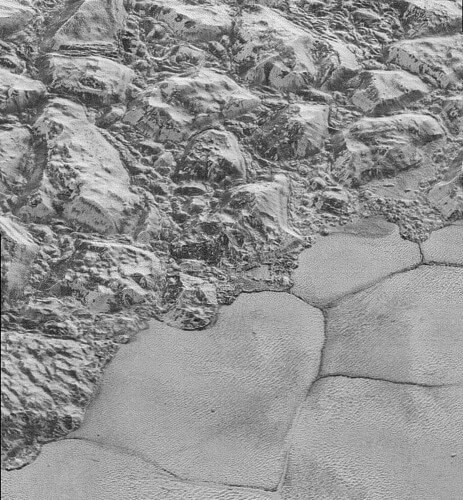
Even after five months since it passed near Pluto, took its first pictures and led to many discoveries concerning the diverse nature of the dwarf planet, NASA's New Horizons probe continues to surprise. Although the probe only passed near Pluto for a short time on July 14 of this year, it collected a lot of information in that short flyby and since then it has been transmitting it at a very slow rate, due to its enormous distance (of billions of kilometers) from Earth, so these new close-up images are also unexpected to be the last, but they are only the first of a series of close-up photos that New Horizons has taken.
The images were taken 15 minutes before the closest point to Pluto in the New Horizons flyby, at a distance of about 17,000 km. The resolution in the images is about 77-85 meters per pixel in their original size, and they show a strip of land that includes diverse terrain features including mountains called the Al-Idrisi Mountains, named after the cartographer and geographer Muhammad Al-Idrisi from the 12th century, and their border with a smooth ice surface which is known as Sputnik Planum. See here A mosaic of the images showing the entire strip.
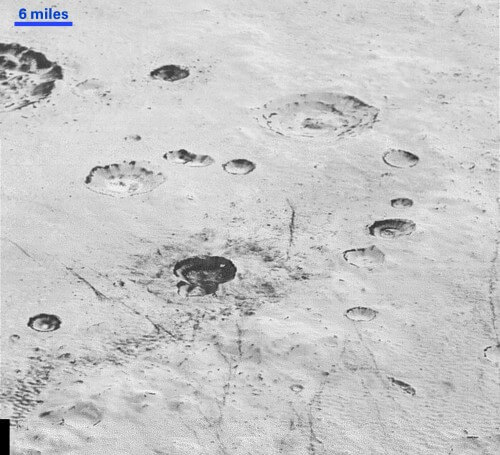
One of the images shows a surface scarred by impact craters from meteorites, which reveal layers within Pluto's surface, which, according to mission researchers, will allow for a better understanding of Pluto's surface.
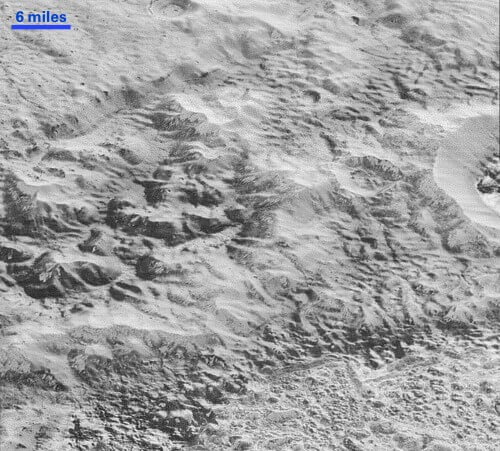
In one of the pictures we can see a rough area called by NASA "Badlands" - on Earth these are areas with steep slopes that have been eroded and dissected by water (Wikipedia). It is probably not liquid water that did this on Pluto's surface, but the various images provided by New Horizons have already shown that Pluto is not a desolate world and completely scarred by impact craters, like other places in the solar system, but that various geological processes are taking place there that create a relatively young terrain and ice surfaces that are free of craters Injury, damage.
In addition to these fascinating images, New Horizons recently provided two more interesting images: The first It is an image that consists of several low-resolution images, taken even before the encounter with Pluto, in order to plan the route of the encounter with it. But when you put several of these images together you can clearly see Pluto's special relationship with its largest moon Saturn. Charon is the largest moon in the solar system relative to the size of the gram it orbits, so much so that Pluto and Charon form a double system where the center of mass is outside Pluto. In the picture you can see that Charon revolves around Pluto, but Pluto also revolves around a more central point that is outside of it and close to it. This, by the way, was one of the reasons Pluto was demoted from a planet to a dwarf planet.
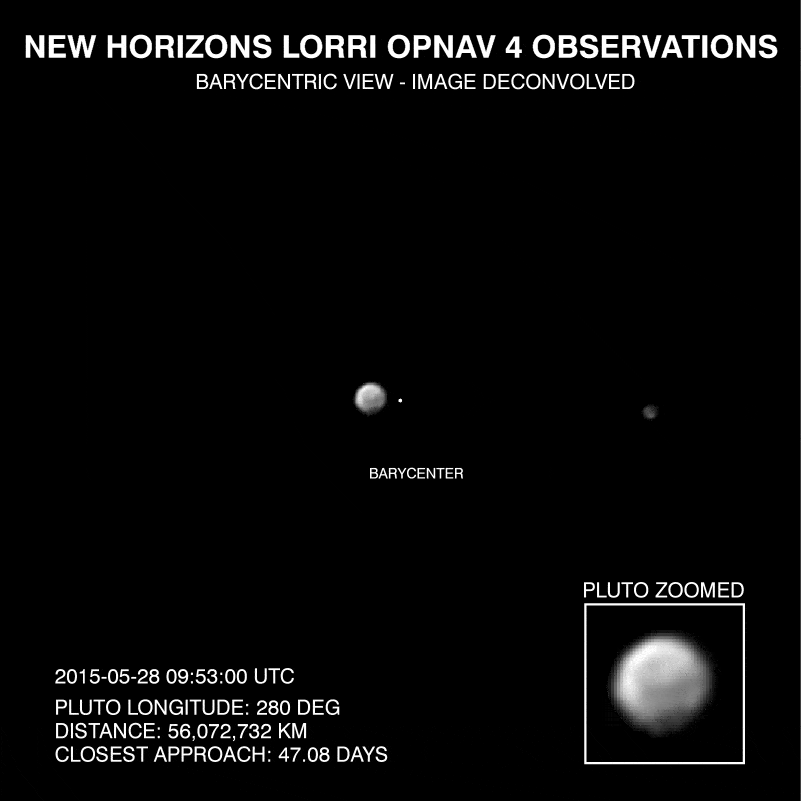
The second image It is an image that New Horizons took last month showing a very distant object in the Kuiper Belt, 1994 JR1. The body, about 150 km in size, appears to be only a point moving against the background of the fixed stars, but this photography capability of the probe will allow, according to the mission personnel, to expand the knowledge that currently exists about the Kuiper Belt.
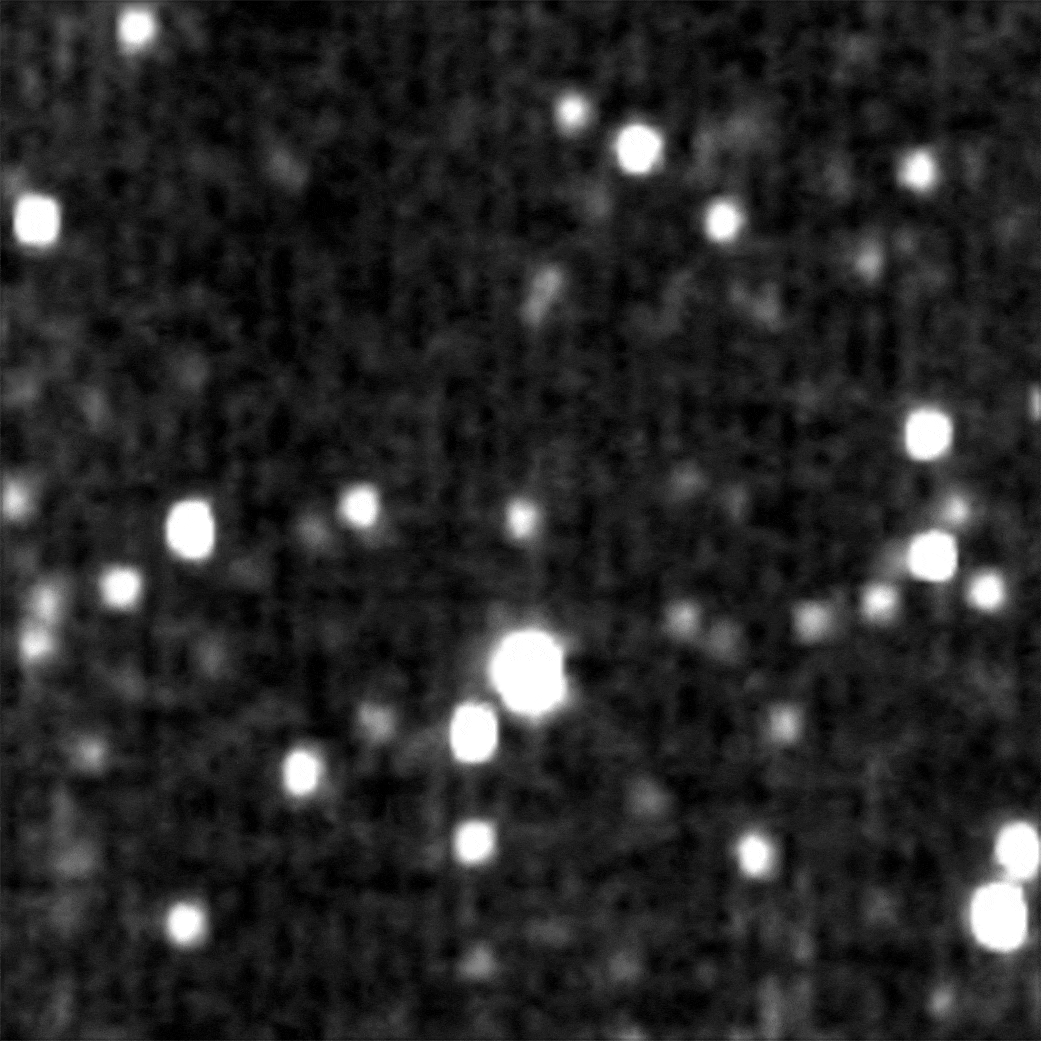
Last October, New Horizons made a series of orbit corrections on its way to the next body it will explore in the distant Kuiper belt, a small body a few tens of kilometers long known as 2014 MU69. The extended mission requires final approval and budgeting from NASA, and a final decision on the matter will be made next year, but the track corrections have already been made to allow the flight near the aforementioned body at the beginning of 2019.
